#thomas doret
Explore tagged Tumblr posts
Text







Le Gamin au vélo | The Kid with a Bike (2011) dir. Jean-Pierre Dardenne and Luc Dardenne cine. Alain Marcoen
#le germain au vélo#The kid with a bike#Jean-Pierre Dardenne#Luc Dardenne#Alain Marcoen#Cécile de France#Thomas Doret#Jérémie Renier#cinema#film#cinematography#screencaps#movies#film stills#my screengrabs#belgian f#criterion collection
8 notes
·
View notes
Text
El niño de la bicicleta

Los realizadores belgas Jean-Pierre y Luc Dardenne ('Rosetta', 'El niño') se ponen nuevamente manos a la obra y prosiguen con su cruda y desesperanzadora radiografía social de la Europa marginal que distingue y caracteriza de forma muy personal su magistral obra y carrera cinematográfica que hasta el momento les ha proporcionado dos Palmas de Oro en el Festival de Cannes. En esta ocasión se centran en la figura de Cyril (Thomas Doret), un chaval de once años de edad, huérfano de madre, que fue abandonado por su padre en un hospicio tras prometerle este que algún día volvería a buscarlo para emprender una nueva vida juntos. Cyril ha permanecido esperanzado con la llegada de ese día, pero ve que nunca va a llegar si él no toma la iniciativa. Por eso escapa para volver al apartamento donde vivían, pero allí no encuentra a nadie. Perseguido por el personal del orfanato, Cyril casualmente conocerá a Samantha (Cécile De France, 'Más allá de la vida'), que le acogerá los fines de semana, proporcionándole al pequeño un poco de amor del que estaba tan necesitado.
#serifilm#cine#Jean-Pierre Dardenne#Luc Dardenne#Cécile De France#Thomas Doret#Jérémie Renier#Fabrizio Rongione#Egon Di Mateo#Olivier Gourmet
0 notes
Text

CINE Renoir (2012) Francia Dirección: Gilles Bourdos Idioma: Francés con Subtítulos en Español
Atención: Solo para ver en PC o Notebook Para ver el Film pulsa o copia y pega el Link: https://memoriasdelcafe.blogspot.com/2025/02/renoir-2012.html
Reparto: Michel Bouquet, Christa Theret, Vincent Rottiers, Thomas Doret, Michèle Gleizer,
Género: Drama | Biográfico. Años 1910-19
SINOPSIS: La Costa Azul, 1915. Auguste Renoir, en el ocaso de su vida, está atormentado por la pérdida de su esposa, los dolores artríticos y la noticia de que su hijo Jean ha sido herido en la guerra. Sin embargo, cuando una joven entra en su mundo, el pintor se siente dueño de una nueva energía. Radiante de vida, bellísima, Andrée se convertirá en su última modelo. Jean regresa a casa para reponerse y también cae bajo el encanto de la estrella pelirroja que brilla en el firmamento de la casona de los Renoir. A la vez que se enamora de la joven, empieza así mismo a desarrollarse el célebre cineasta que más tarde fue.
Crítica: "Una película luminosa, de enorme belleza plástica, muy inspirada por los cuadros del pintor, que habla de la alegría de vivir, de la creación artística, y de las relaciones familiares." -Boquerini: Diario ABC
Premios: 2012: Festival de Cannes: Sección oficial a concurso (sección "Un Certain Regard") 2013: Premios César: Mejor vestuario. 4 nominaciones
Café Mientras Tanto jcp
0 notes
Text
The Kid with a Bike
Abandoned by his father, a young boy is left in the hands of an unqualified childcare provider. Credits: TheMovieDb. Film Cast: Samantha: Cécile de France Cyril: Thomas Doret Guy: Jérémie Renier Le libraire: Fabrizio Rongione The Bar Owner: Olivier Gourmet Wes: Egon Di Mateo Educateur 1: Baptiste Sornin Educateur 2: Samuel De Rijk L’assistante médicale: Myriem Akheddiou Film Crew: Producer:…
0 notes
Photo

Thomas Doret
#thomas doret#le gamin au vélo#les revenants#Renoir#zone blanche#seuls#de l'autre côté#maxime#les témoins#L'ami - François d'Assise et ses frères
12 notes
·
View notes
Photo




Le gamin au vélo [The Kid with a Bike] (Jean-Pierre and Luc Dardenne, 2011)
#Le gamin au vélo#The Kid with a Bike#Jean-Pierre and Luc Dardenne#Jean-Pierre Dardenne#Luc Dardenne#the Dardenne brothers#Dardenne#Thomas Doret#Cécile de France#drama film#Belgian drama film#cinema#Belgian cinema#Belgian movies#Cinema of Belgium#Belgium#affection#European cinema#European movies#Seraing#frères Dardenne#Belgique
15 notes
·
View notes
Photo

Cécile de France and Thomas Doret in The Kid With a Bike (Jean-Pierre Dardenne and Luc Dardenne, 2011)
3 notes
·
View notes
Photo
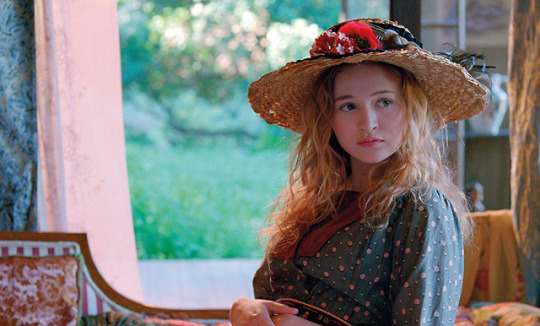
Renoir (2012) Director: Gilles Bourdos, Actores: Vincent Rottiers, Christa Théret, Michel Bouquet, Thomas Doret.
Basada en el libro escrito por el nieto del pintor francés, Renoir es una película que cuenta los últimos años de la vida de Pierre-Auguste Renoir, que dedicó la última parte de su carrera a estudiar el cuerpo femenino, retratándolo constantemente en la naturaleza. También nos cuenta la historia de su última modelo, y como ella se enamoró de su hijo, es a través de sus ojos como conocemos al pintor inmortal, lo conocemos como padre, como patrón, como dueño y como amante, a través de ella le ponemos alma al hombre detrás del pincel, muchas veces el último en el que pensamos al ver sus lienzos.
Andrée es modelo, artista, cantante y actriz, realmente lo que sea, pues el tiempo hace dificil que la gente sea quisquillosa, vive en medio de la Gran Guerra en el sur de Francia, donde muchas veces los soldados no regresan a sus ciudades o lo hacen enfermos o amputados, la expectativa es alta, deben vencer. Ella llega a la casa de Renoir padre, el famoso pintor que ahora, por la artritis y la vejez se ha mudado a una hermosa casa en el clima cálido, donde no hace más que pintar. Al llegar, y tras insistir, es contratada, y se dedica a posar mientras las sirvientas de la casa susurran algo a sus espaldas, todos conocen algo que ella no. Al poco tiempo, desde el frente, llega Jean, el hijo preferido del patrón, con centímetros menos de pierna y suerte de no haber muerto en la batalla. Renoir padre no quiere que regrese, pero Jean no es otra cosa más que soldado, pero poco a poco, gracias a Andrée se dará cuenta de que vale para algo más, y decide probar su suerte con ella.
Una película visualmente hermosa, la fotografía refleja la naturaleza de la provincia francesa y se siente, verdaderamente, como una pintura de Renoir. La producción también es magnífica, cuidando los detalles de la época y del tipo de historia que busca contar. Las actuaciones son de igual manera, excelentes, desde el anciano aferrado de Rottiers, hasta la amorosa y oportunista de Théret, pasando por el niño problemático de Doret y el iluso pero soñador de Bouquet. Renoir es una película excelentemente realizada que, a pesar de que flanquea un poco en su objetivo, entrega un trabajo preciso y hermoso, estéticamente plácido, y perdurable.
#renoir#pierre auguste renoir#jean renoir#gilles bourdos#vincent rottiers#crista theret#michel bouquet#thomas doret#2012#2010s#2010s movies#great war#wwi#wwi history#french cinema#Francia#cine francés#cinéma français
3 notes
·
View notes
Photo

Egon Di Mateo and Thomas Doret in The Kid With a Bike (Jean-Pierre Dardenne and Luc Dardenne, 2011)
Cast: Thomas Doret. Cécile de France, Jérémie Renier, Fabrizio Rangione, Ego Di Mateo, Olivier Gourmet, Baptiste Sornin, Samuel De Ryck, Carl Jadot. Screenplay: Jean-Pierre Dardenne, Luc Dardenne. Cinematography: Alain Marcoen. Production design: Igor Gabriel. Film editing: Marie-Hélène Dozo.
Jean-Pierre and Luc Dardenne have said that they were influenced by fairytales when they wrote and directed The Kid With a Bike. Like the Grimm brothers, the Dardenne brothers don't bother giving the backstories of the "good" and "bad" characters in the film. We don't ask how the wicked stepmothers in fairytales got to be so wicked or why the fairy godmothers are so good. In a similar fashion, we are never told what causes Guy Catoul (Jérémie Renier) to be so coldly abrupt in cutting his own son, Cyril (Thomas Doret), out of his life, to the point that he sells the boy's beloved bicycle and puts him into a group home. He provides an economic motive -- he can't afford to support the boy -- but refuses even to make contact with him. Nor do we learn what makes Samantha (Cécile de France) so willing not only to buy the boy's bike from the man Catoul sold it to but also to take the boy himself into her own life. After all, her first encounter with the enraged, belligerent child is in the waiting room of a clinic, where he clings to her for help as the attendants from the group home try to subdue him. She seems to have a settled life as a beautician with a handsome boyfriend. Why borrow such obvious trouble? I felt another literary influence at work in the film: Charles Dickens, who set his tales of rescued orphans like Oliver Twist and David Copperfield in the realistic context of 19th-century England. The Dardennes set their story about Cyril in the context of 21st-century Belgium's working-class suburbs. Like Oliver Twist, Cyril Catoul falls prey to the underworld: He is persuaded to take part in a robbery by a kind of Fagin, a gang leader who calls himself Wesker (Egon Di Mateo), after a character in the Resident Evil video game franchise. The Dardennes don't take a fully neorealist approach to the story: The Kid With the Bike is not an exposé, but rather a tribute to human kindness overcoming contemporary anomie. It is made plausible by their matter-of-fact approach, but mostly by the performances, especially that of 13-year-old Doret, who had never acted before, but brings full conviction to every scene, including his rages and his hunger to be reunited with his father, as well as his eventual acceptance of Samantha's love and authority. The directors never milk a moment for sentiment: The only non-diegetic music on the soundtrack is the occasional punctuation at the end of a scene with a few bars from Beethoven's "Emperor" concerto, which has the tantalizing effect of keeping us suspended until the rest of the adagio is performed over the end credits.
1 note
·
View note
Photo
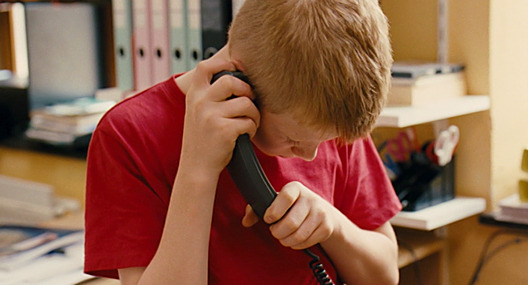
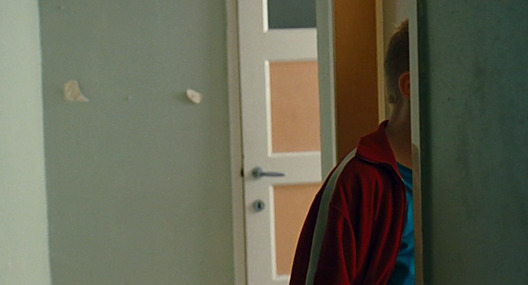
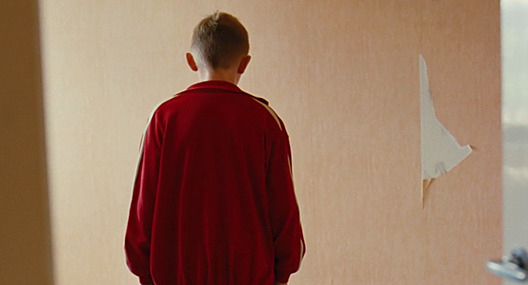
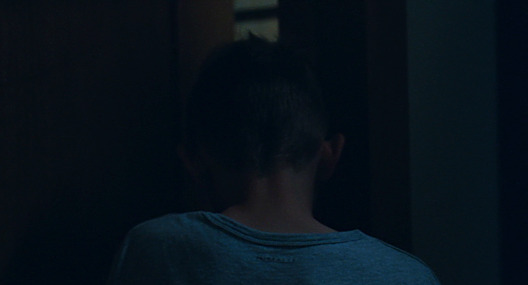


Thomas Doret as Cyril in The Kid with a Bike (2011, Jean-Pierre and Luc Dardenne, dir.)
#thomas doret#the kid with a bike#le gamin au velo#jean-pierre dardenne#luc dardenne#the dardenne brothers
36 notes
·
View notes
Photo

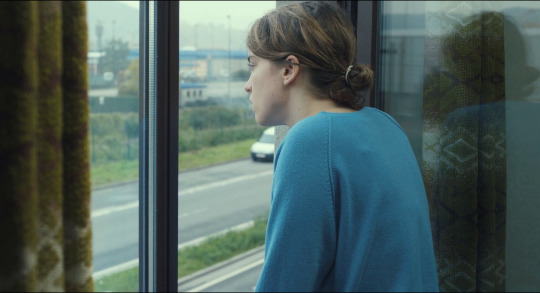
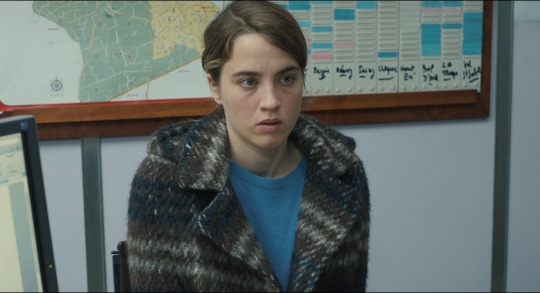

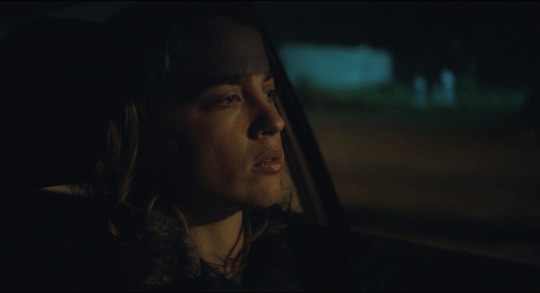

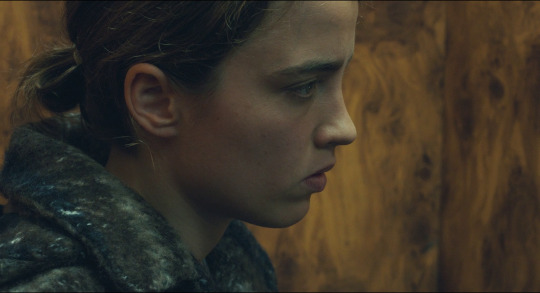
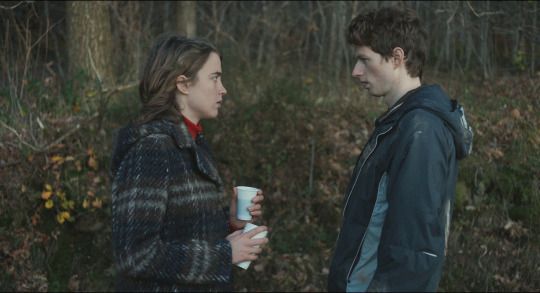


The Unknown Girl (Jean-Pierre Dardenne & Luc Dardenne, 2016)
#adèle haenel#jérémie renier#thomas doret#la fille inconnue#the dardenne brothers#luc dardenne#jean-pierre dardenne#the unknown girl
123 notes
·
View notes
Photo

2011; dir. Jean-Pierre & Luc Dardenne
My review of the Criterion Collection Blu-ray.
#the kid with a bike#thomas doret#dardenne brothers#luc dardenne#jean-pierre dardenne#criterion collection#movies#blu-ray reviews
3 notes
·
View notes
Photo

Hector Dufranne (25 October 1870 – 4 May 1951) was a Belgian operatic bass-baritone who enjoyed a long career that took him to opera houses throughout Europe and the United States for more than four decades. Admired for both his singing and his acting, Dufranne appeared in a large number of world premieres, most notably the role Golaud in the original Opéra-Comique production of Claude Debussy's Pelléas et Mélisande at the Salle Favart in Paris in 1902, which he went on to sing 120 times at that house. He had an excellent singing technique which maintained the quality of his voice even into the latter part of his career. His wide vocal range and rich resonant voice enabled him to sing a variety of roles which encompassed French, German, and Italian opera. He studied at the Brussels Conservatory with Désiré Demest before making his professional opera debut in 1896 at La Monnaie as Valentin in Charles Gounod's Faust. He returned to that opera house several times to sing such roles as Grymping in Vincent d'Indy's Fervaal (1897), Alberich in Richard Wagner's Das Rheingold (1898), Thomas in Jan Blockx's Thyl Uylenspiegel (1900), Thoas in Christoph Willibald Gluck's Iphigénie en Tauride (1902), the Innkeeper in Engelbert Humperdinck's Königskinder (1912), and Rocco in Ermanno Wolf-Ferrari's I gioielli della Madonna (1913). Dufranne sang at the Opéra-Comique in Paris from 1900 to 1912, making his first appearance as Thoas. He appeared in several world premieres with the company including creating the roles of Saluces in Griselidis (1901), the title role in Alfred Bruneau's L' Ouragan (1901), Golaud in Pelléas et Mélisande (1902), Amaury-Ganelon in La Fille de Roland by Henri Rabaud (1904), Koebi in Gustave Doret's Les Armaillis (1906), the title role in Xavier Leroux's Le Chemineau, Clavaroche in Fortunio by André Messager (1907), the fiancé in Raoul Laparra's La Habanéra (1908), and Don Iñigo Gomez in Maurice Ravel's L'Heure espagnole (1911). He also sang Scarpia in the Opéra-Comique’s first production of Giacomo Puccini's Tosca (1909). Dufranne also appeared periodically at the Paris Opera beginning in 1907. He notably portrayed the role of John the Baptist in their first production of Richard Strauss's Salome (1910). He also sang at the Opéra de Monte-Carlo in 1907 where he took part in the creation of two world premieres, the role of André Thorel in Jules Massenet's Thérèse and the title role in Bruneau's Naïs Micoulin. In 1914 he sang the role of Golaud in his only appearance at the Royal Opera, Covent Garden in London. In 1908 Dufranne we nt to the United States for the first time to sing with the Manhattan Opera Company in the American premiere of Pelléas et Mélisande. He returned for several more productions through 1910, appearing as le Prieur in Le jongleur de Notre-Dame (1909), Caoudal in Sapho (1909), Rabo in Jan Blockx's Herbergprinses (performed in Italian as La Princesse d'Auberge, 1909), John the Baptist in Richard Strauss's Salome (1910), and Saluces in Massenet's Griselidis (1910). He also sang with the Chicago Grand Opera Company and the Chicago Opera Association from 1910 to 1922, creating there Léandre in The Love for Three Oranges (in French) by Sergei Prokofiev, in 1921. In 1922, Dufranne returned to Paris where he continued to appear in operas in all the major houses in addition to appearing in other opera houses in France. He also spent a brief time performing in Amsterdam in 1935. In 1923 he created the part of Don Quixote in the stage première of El retablo de maese Pedro under the baton of the composer, Manuel de Falla. The performance was for a private audience and was held in the private theatre of Winnaretta Singer, Princess Edmond de Polignac; he repeated the role in a Falla triple-bill at the Opéra-Comique in 1928. In 1924, he appeared at the Théâtre des Champs-Élysées in the world premiere of Léon Sachs's Les Burgraves. With the outbreak of World War II in 1939, Dufranne retired from the stage, with his last performance being the role of Golaud at the opera house in Vichy. He lived in Paris where he taught singing for many years before his death in 1951.
9 notes
·
View notes
Photo

Thomas Doret
1 note
·
View note
Text
Assistir Filme O Garoto da Bicicleta Online fácil
Assistir Filme O Garoto da Bicicleta Online Fácil é só aqui: https://filmesonlinefacil.com/filme/o-garoto-da-bicicleta/
O Garoto da Bicicleta - Filmes Online Fácil

Cyril Catoul (Thomas Doret) tem 11 anos de idade e um objetivo: encontrar o pai, que o deixou em um orfanato. Por acaso ele conhece Samantha (Cécile de France), a administradora de um salão de cabeleireiro, que permite que o garoto passe os fins de semana com ela. Entretanto, Cyril não consegue reconhecer o carinho com o qual é tratado por Samantha, graças à raiva que sente por ter sido abandonado pelo pai.
0 notes
Video
tumblr
Hey, My name is Oren Gerner, I make and love short films. you can find me here: https://www.facebook.com/groups/ShortFilmsSociety/ SYNOPSIS A teenager is walking through the forest with his classmates, looking for Gabriel, a kid from his boarding school who went missing. After a violent incident, he separates from the rest of group and starts to wander alone. He slowly drifts away from the searching crew, deeper into the forest. Starring: Thomas Doret, Eliott Le Corre. Directed and written by Oren Gerner Produced by Mélissa Malinbaum (WHY NOT PRODUCTIONS) Director of photography: Adi Mozes Assistant director: François-Xavier Dupas Edited by Juliette Alexandre Casting director: Julia Malinbaum Light Design: Georges Harnack Sound Recording and sound design by Colin Favre-Bulle Sound mix by Clément Laforce Color by Augustin Barbaroux and Yoav Raz Art Director: Marie-Cerise Bruel Directeur de production: Thomas Hakim Special effects by Daniel Falik Short Film Society: https://www.facebook.com/groups/ShortFilmsSociety/
0 notes